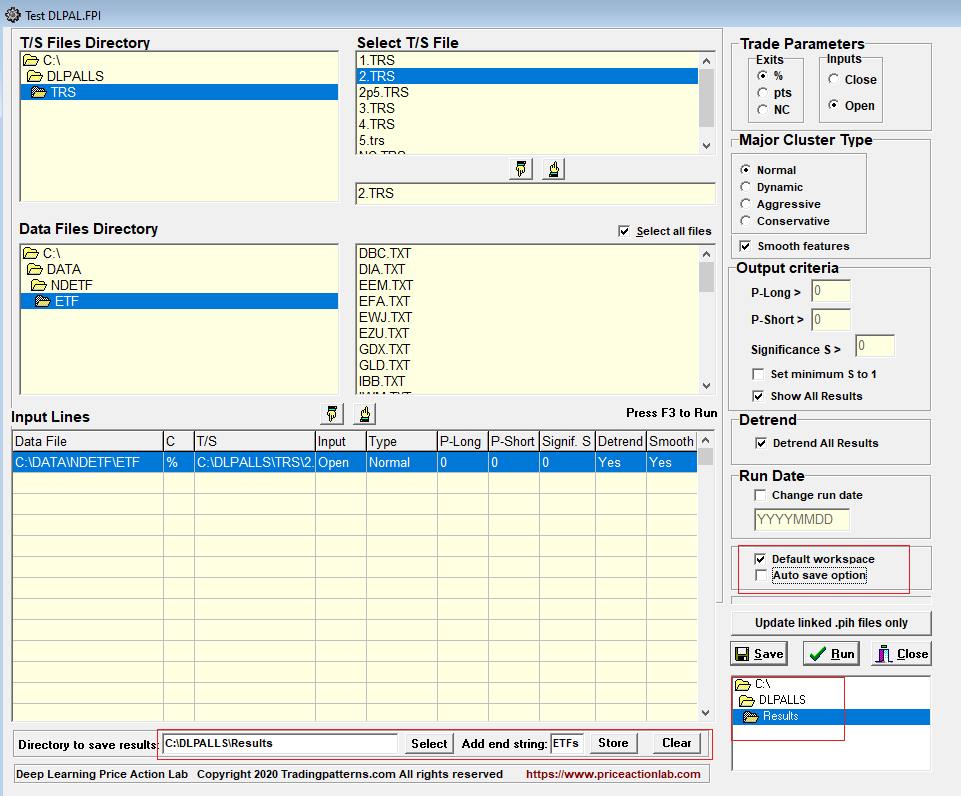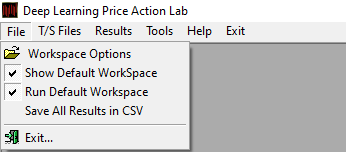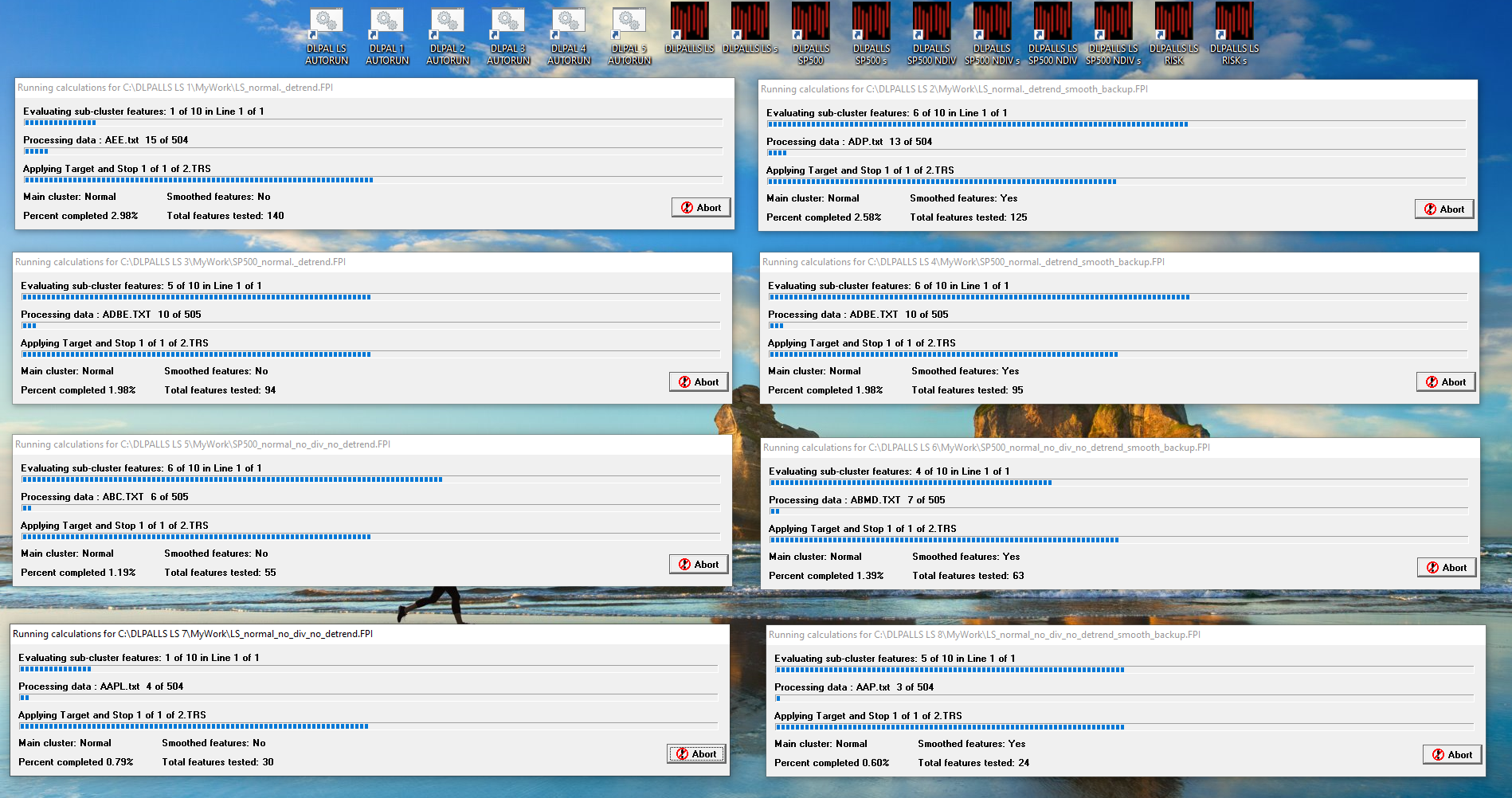The Execution Automation Add-on (EAA) allows running the program in the background, automatically saving results to a directory of choice and terminating execution after the run is completed. This add-on requires v6.0 or higher.
In order to use EAA, the user must complete the following steps:
- Create a workspace, check the option “Default workspace” and the save it, in this order.
- Mark options to “Show Default Workspace” and “Run Default Workspace” under File from main program menu.
After the program runs, the results are saved in file tmppi.spi in directory \Results, which is found under the main installation directory. The user can save the results with a filename of choice to any other directory desired as normally.
The results can also be saved automatically in a directory specified by the user with a default name that includes the last date in the last data file processed during the run plus a user-defined string. Date format is YYYYMMDD. In order to use EAA to save the results automatically follow the steps below:
- Mark the “Auto save option” on the workspace.
- In the box that appears, select the directory to save the results and an optional string to be added to default file name and then click Store.
If steps1, 2 and I, II, above are followed, every time the program executes, it will save the results in the specified directory and then exit. More details are included below.
Steps 1, I, II
Below is a workspace to generate results for ETFs.
To use EAA, check “Default workspace” and then click “Auto save option”. In the box that appears click “Select to select the directory from the drop down list that shows up. Do not forget to click again “Select” after selecting the directory to save the results. The selected directory should appear in the box “Directory to save results”.
You can also add an extra string of choice. In the above example, it is “ETFs”. Then click “Store” to save. Any previous specified directory and extra string will be cleared and the new choices will be saved.
The directory to save the results and the extra string are stored in file savedir.dis in \Results under main program installation directory. You can even edit the file manually or delete it if you would like to terminate automatic execution.
Do not forget to save the workspace after done; otherwise the settings will be lost.
Step 2
Mark options to “Show Default Workspace” and “Run Default Workspace” under File from main program menu.
Optionally, you may elect to mark option to “Save All Results in CSV” format. This will save the results each time the program runs in \Results directory under main program installation directory with name “Date (YYMMDD) time hh:mm”. This option can be used to execute the program at specific intervals of time even with intraday data.
Important notes
-If you would like the program to just load a workspace automatically and run it without closing, just repeat all steps above except the one that creates a directory to save the results. Alternatively, if the directory exists, either delete savedir.dis file or click “Clear” after clicking the “Auto save option”.
– Do not forget to click again “Select” after selecting a directory to save the results from the drop down directory list.
– To stop autorun and program exiting after saving the results, click “Abort” on form with progress bars and then click “Clear” after clicking the “Auto save option”.
– The add-on is useful in running multiple instances of the program simultaneously and saving the results automatically.
Example
This is an example of a .bat file for running 8 instances of the program:
CD “C:\DLPALLS LS 1”
START DLPALLS.EXE
CD “C:\DLPALLS LS 2”
START DLPALLS.EXE
CD “C:\DLPALLS LS 3”
START DLPALLS.EXE
CD “C:\DLPALLS LS 4”
START DLPALLS.EXE
CD “C:\DLPALLS LS 5”
START DLPALLS.EXE
CD “C:\DLPALLS LS 6”
START DLPALLS.EXE
CD “C:\DLPALLS LS 7”
START DLPALLS.EXE
CD “C:\DLPALLS LS 8”
START DLPALLS.EXE
This is a screenshot of the instances running:


